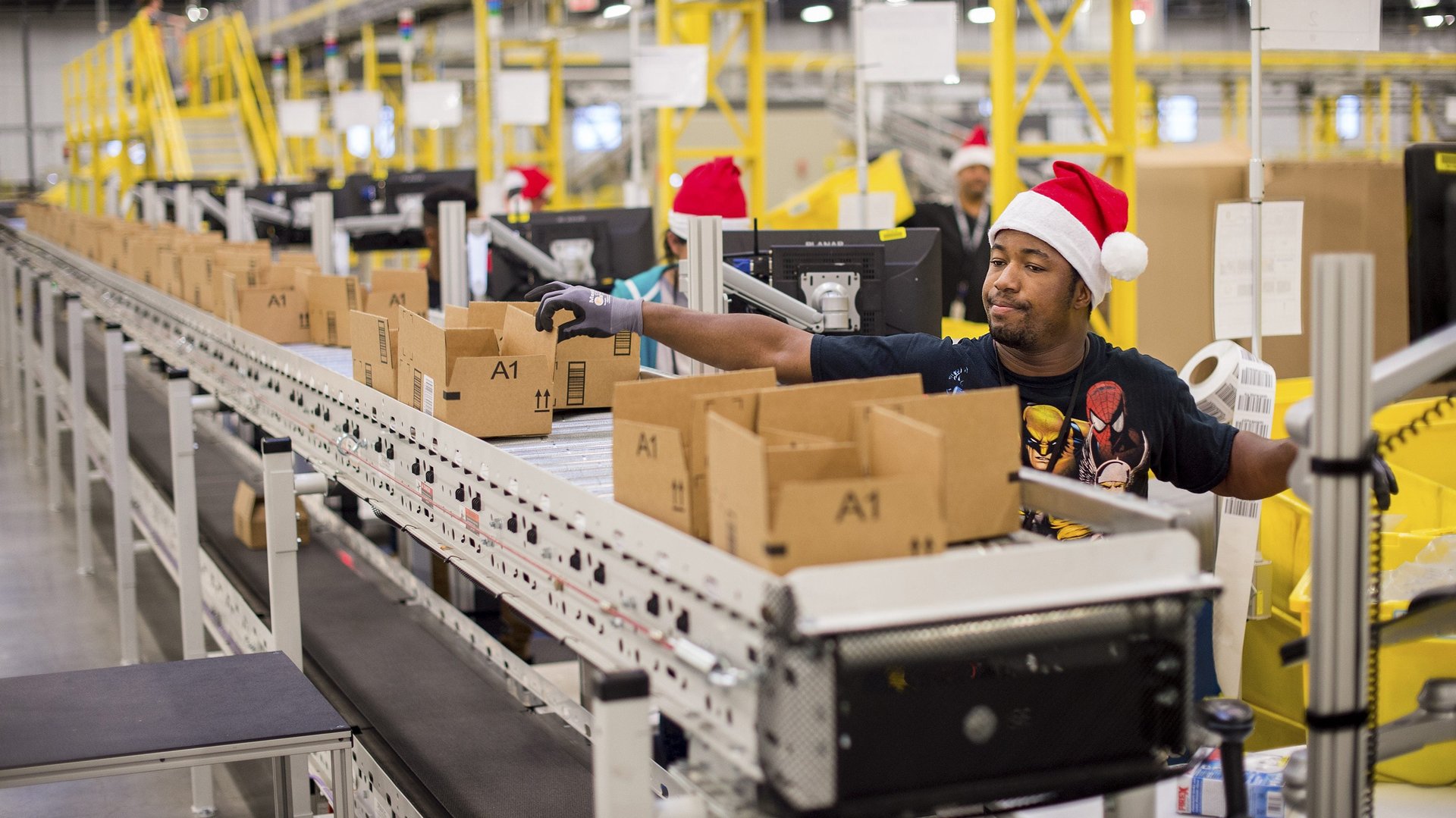Amazon is determined to save Christmas, at any cost
Amazon will throw truckloads of money at its supply chain and staffing problems in the run-up to Christmas.


Amazon will throw truckloads of money at its supply chain and staffing problems in the run-up to Christmas.
In the quarter ending Dec. 31, the e-commerce behemoth expects “to incur several billion dollars of additional costs” as it grapples with “labor supply shortages, increased wage costs, global supply chain issues, and increased freight and shipping costs,” CEO Andy Jassy said when the company posted its earnings yesterday (Oct. 28).
All this will cost the company $4 billion in the fourth quarter, chief financial officer Brian Olsavsky estimated on the earnings call.
The company has already been struggling with these issues. Its third-quarter results were weaker than expected, causing shares to fall by more than 4% in extended trading. Its net income nearly halved to $3.2 billion in the June-September period, down from $6.3 billion a year ago. And its guidance for the fourth quarter also fell short of analyst expectations.
But outside of Wall Street, the trillion-dollar online retail giant is determined to do “whatever it takes to minimize the impact” on customers and sellers, Jassy said.
Amazon won’t let supply chain woes ruin Christmas again
Amazon doesn’t want another debacle like 2013, when some customers were left without gifts on Christmas Day because couriers like UPS and Fedex had massive backlogs.
Since that fiasco, the company has taken the logistics reigns in its hands. Amazon is now the third largest courier in the US now, beating Fedex’s shipment volumes. Over the last year, the company has stepped up logistics investments, adding airplanes, trailers, trucks, and vans.
“We’ve increased ports of entry across our network by 50%, doubled our container processing capacity, and expanded our ocean freight carrier network partnerships to secure committed capacity into critical ports within our network,” Amazon wrote in an Oct. 25 blogpost.
Despite the preparedness, costs will rise due to external factors like “inflation in the cost of materials such as steel and services such as trucking,” Olsavsky said. Moreover, the shortage and surge in prices of shipping containers are creating bottlenecks.
Meanwhile, labor is a bigger point of contention. Olsavsky said that staff shortages became Amazon’s “primary capacity constraint” in the third quarter.
Amazon is paying more to get more workers
Amazon has already “incurred billions of dollars in additional cost to keep our employees safe and to support testing and other covid-related costs,” Olsavsky says. Seasonal hiring will only pile up costs further.
In the last three months of the year, Amazon wants to hire 150,000 workers in the US. Given that the labor market is tight, “wage increases and sign-on incentives” are weighing heavy, Olsavksky says. The starting wage for Amazon workers in north America is now over $18 per hour with an additional $3 per hour depending on shifts in many locations.
In the UK, where it is hiring for 20,000 temporary positions in the run-up to Christmas, the company is offering sign-up bonuses of up to $3,000.
It won’t be able to shed all these costs come January either. Olsavsky predicts that, unlike supply-chain costs that’ll come down over time, about half of the cost is permanent on the labor front.